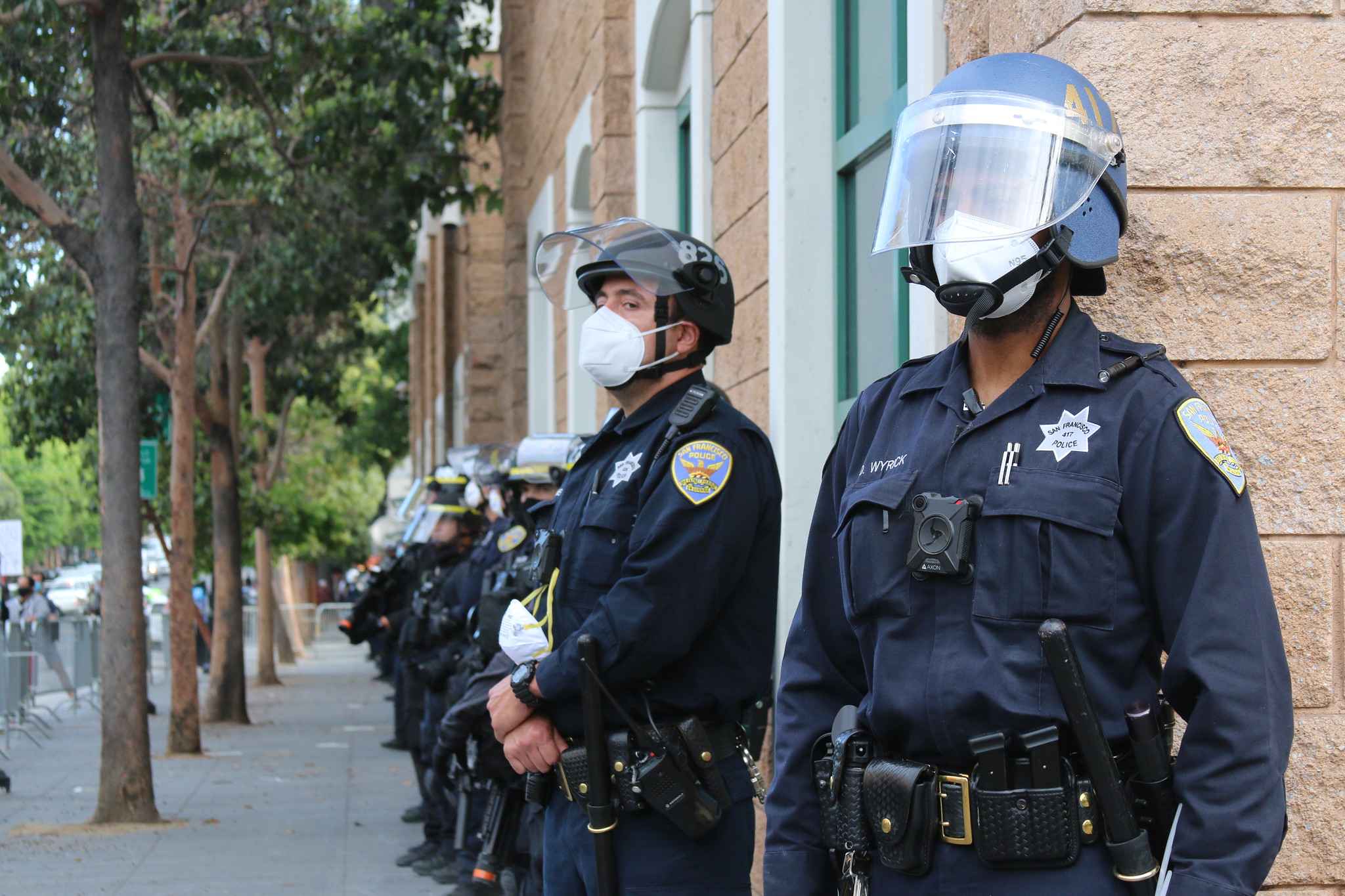Toward a New Era for Federal and State Oversight of Local Police
The George Floyd Justice in Policing Act will use federal grants to regulate police departments. Will this be enough to undo a century of policies and practices that have shielded local police from state and federal oversight?

Published by The Lawfare Institute
in Cooperation With

The House of Representatives recently passed the George Floyd Justice in Policing Act of 2020, which the Senate is now mulling over. The historical context of some of the bill’s provisions aimed to regulate the police is worth noting and applauding. One such provision authorizes the U.S. Department of Justice to maintain a National Police Misconduct Registry, which seeks to address the “wandering officer” problem, in which officers fired for misconduct in one department are subsequently hired by another department. Because current efforts to track such officers are voluntary and, unsurprisingly, have proved inadequate, the law would make local departments’ participation in the registry a condition for federal funding.
Another key provision gives state attorneys general a cause of action in federal court to sue police departments for engaging in a “pattern and practice” of constitutional violations, similar to the kinds of suits the Justice Department has brought to address systemic deficiencies, particularly for use of excessive force and discriminatory policing. To support this method of state oversight, the legislation would also authorize the Justice Department to award grants in support of state investigations.
Using the federal informational infrastructure to regulate local policing and encouraging state officials to step into new oversight roles—and pursuing both with federal funds—are promising, common-sense reforms. But history shows the federal government’s sustained refusal to do so. It’s a fascinating history that goes back at least to the 1920s, as we tell in a forthcoming article about the road not taken and the reasons why. Congress is finally reversing course in response to the widespread protest movement after Floyd’s death. The question now, especially amid growing concerns about an increase in crime, is whether calls for police reform will be enough, not just to get the bill passed but also to ensure that the bill’s structural changes will work as intended. Such reforms would go against nearly a century of policies and practices that shielded local police from both state and federal oversight.
The History: Car Theft and an Informational Platform
Policing was always a local matter in the United States, and it largely remains so. By the end of the 19th century, however, police departments confronted the challenges of mobility magnified by mass-produced cars. Criminal activity crossed county, even state, lines in motor-powered vehicles; so did fugitives. Police leaders in the larger cities soon gave up on establishing their own network of sharing crime-related information and sought Congress’s help. But Congress initially showed little interest in creating a national identification database. It was more receptive to federalizing interstate crime and, in 1919, passed the National Motor Vehicle Theft (Dyer) Act, making the interstate transportation of stolen cars a federal crime. Its enforcement soon laid the foundation on which such a network could be built and sustained.
At the dawn of the automotive era, insurance companies had borne the brunt of the growing car theft problem (exacerbated because ignition locks were not yet a standard feature) and lobbied hard for federal legislation. They found a willing sponsor in Rep. Leonidas Dyer. But even with their hard-won law, insurers and local police often didn’t know whether a stolen car had crossed state lines and still desperately needed federal assistance. And if the federal government chose not to investigate under the Dyer Act, the expense and interjurisdictional hassles of putting evidence and defendants together when a car was stolen in one state and found in another made prosecution in state courts prohibitive.
Unrestricted by state boundaries, the Bureau of Investigation—the precursor to the FBI—was pleased to help out by gathering evidence from various localities and either handing the cases over to a county for state prosecution or pursuing them as federal cases. Far from intruding on local enforcers, the bureau’s aid on Dyer Act cases substituted for interstate information-sharing and clunky extradition procedures. Car cases were thus as much a part of the federal informational infrastructure as the National Identification and Information Division that the bureau established in 1924 mainly to collect and manage a fingerprint database at the urging of the International Association of Chiefs of Police.
Auto theft cases proved to be a politically rewarding line of business for the bureau, unlike the more controversial Prohibition cases, which it largely avoided. By 1929, Dyer Act convictions constituted more than half of the bureau’s convictions. Even when President Franklin Roosevelt and Attorney General Homer Cumming’s “War on Crime,” rolled out in 1934, made much of targeting high-profile gangsters, the bureau’s focus on Dyer Act cases stayed at almost the same level. FBI Director J. Edgar Hoover annually touted the number of cases brought and the value of property recovered. Congressional appropriators liked these numbers, as evident in the bureau’s steadily growing budget. Moreover, all the work on cases of deep interest to local police helped assuage the inevitable hard feelings when sharp-elbowed bureau agents grabbed the limelight when going after famous bad guys. Even as the bureau sought to make a name for itself by pursuing gangsters and rousting alleged subversives, it could not have survived, let alone flourished, without servicing local departments with its informational platform.
Operational federalism—that is, the relationship of mutual exchange and co-dependence between local and federal agencies—enlarged the bureau’s capacity and authority, but it also strengthened local autonomy. For one thing, even the smallest department had access to the federal platform, with little need for support from state governments that might have developed supervisory mechanisms. Second, because the feds relied on information and resources from local departments, they were loath to hold them accountable. The bureau’s collaborative relationship with local departments on auto theft cases thus helps explain why the police have gone for so long without meaningful state or federal oversight.
The Road Not Taken
Over the 20th century, relationships forged through Dyer Act cases created structural impediments to institutional accountability. Moreover, at every turn, the feds affirmatively promoted a world in which they would be the indispensable interlocutors with the local police, shutting out the states in law enforcement matters, even as states provided penal codes and prisons.
In other fields, particularly highways and poor relief, federal grant-in-aid programs funneled money through state bureaucracies that inevitably used those grants to shape local priorities and operations. The New Deal, however, studiously avoided such programs for policing (and education). The 1934 Fugitive Felon Act, for instance, provided a substitute for extradition, which supplanted the role of governors, who had been the sole recourse for local enforcers seeking offenders who had fled the jurisdiction. Decades later, federal grants distributed under the Law Enforcement Assistance Act of 1965 could have fostered the development of state oversight bureaucracies, but, in the absence of federal conditions, local autonomy was left largely undiminished. To be sure, there has been progress; for example, in the mid-1990s after the police beating of Rodney King, Congress authorized the Justice Department to pursue institutional change in departments with “patterns or practices” of unconstitutional conduct. But federal forbearance has largely continued—until, perhaps, now.
The Current Scene
Recent mobilizations have changed the political risks. After widespread protests that followed Floyd’s killing, Congress is considering legislation that would use the federal informational infrastructure not just to facilitate but also to reform policing and that would encourage states to expand their supervisory role over local police. States are acting too. New York and Iowa have empowered their attorneys general to investigate police-involved deaths. Colorado set limits on police use of force and mandated data collection to crack down on wandering officers. In response to a Justice Department investigation, commenced in the aftermath of Michael Brown’s death, that highlighted Ferguson’s exploitative enforcement of traffic violations, the Missouri legislature, supported by the governor, reduced the cap on general operating revenue that a municipality could collect from traffic tickets, from 30 percent to 20 percent. Connecticut recently barred local police forces from hiring officers dismissed for misconduct by other state agencies, as well as those who resigned to avoid dismissal. The list grows. And federal pressure, like the George Floyd Justice in Policing Act, can only help. Without external pressure, governors and state legislators have largely avoided holding local police accountable and caved in to anti-reform police union lobbying.
The protests have gotten the country this far. Still, it remains to be seen whether the pressures for reform will prevail over the pressures of operational federalism. Are they enough to overcome the Justice Department’s reliance on locals for information critical to its missions? Widespread protest movements have changed history before. Yet lasting change often is made not in moments of historic legislative enactments, but in the days after, in the practices of government officials that, over time, become institutionalized. George Floyd’s namesake bill has the potential to reform local police by changing the oversight assignments of state and federal officials—if they follow through with their legislative mandate.




.jpg?sfvrsn=676ddf0d_7)

